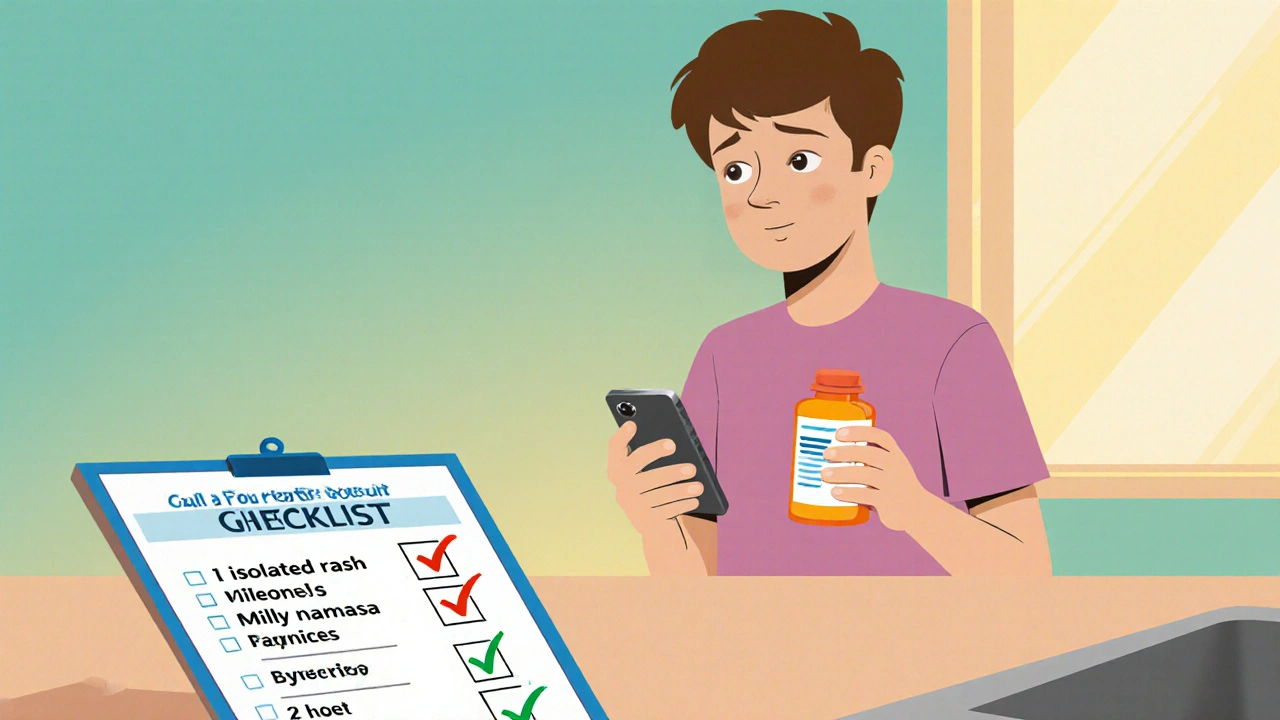
Lupus Hair Loss Type Quiz
1. How would you describe the pattern of hair loss?
2. What recent trigger have you experienced?
3. Is there visible scarring on the scalp?
Systemic Lupus Erythematosus (SLE) is a chronic autoimmune disease that attacks healthy tissue, most often skin, joints, kidneys, and the nervous system. When the immune system misfires, it can also target hair follicles, leading to lupus hair loss that worries many patients.
Why Lupus Affects Your Scalp
The link between SLE and hair loss is multifactorial. First, inflammation driven by cytokines such as interferon‑alpha attacks the skin (a condition known as Cutaneous Lupus involves a rash and direct skin damage). Second, the general immune dysregulation classified under Autoimmune Disease means the body’s defense system mistakenly attacks its own cells can disrupt the hair growth cycle.
Stress, fever, and medication changes often act as triggers that push hair follicles into a resting phase called telogen, producing a sudden shedding pattern known as Telogen Effluvium a diffuse, non‑scarring hair loss. The result is a noticeable thinning that can be alarming, especially when it coincides with lupus flares.
Common Types of Lupus‑Related Alopecia
Not every patch of shedding looks the same. Physicians usually sort lupus‑related hair loss into four main categories:
- Discoid Lupus Alopecia - scarring patches caused by the chronic skin lesions of discoid lupus.
- Telogen Effluvium - diffuse shedding after a flare, fever, or medication change.
- Medication‑Induced Alopecia - hair loss directly linked to drugs such as cyclophosphamide or high‑dose corticosteroids.
- Anagen Effluvium - rapid loss of actively growing hairs, rare but seen with chemotherapy‑type agents.
Understanding which pattern you’re dealing with helps clinicians choose the right treatment path.
| Type | Primary Cause | Hair‑Loss Pattern | Scarring? | Typical Treatment |
|---|---|---|---|---|
| Discoid Lupus Alopecia | Cutaneous lupus lesions | Localized patches | Yes | Topical steroids, antimalarials |
| Telogen Effluvium | Immune flare, stress, fever | Diffuse shedding | No | Address flare, supportive care |
| Medication‑Induced Alopecia | Drugs (e.g., cyclophosphamide) | Variable, often diffuse | No | Adjust meds, alternative agents |
| Anagen Effluvium | Chemotherapy‑type agents | Rapid, patchy | No | Drug holiday, scalp cooling |
Medications: Double‑Edged Sword
Many lupus patients rely on Antimalarial Drug hydroxychloroquine is the most common, reducing skin inflammation and disease activity. While it often improves hair health by controlling cutaneous lesions, other drugs can worsen shedding.
Corticosteroid a powerful anti‑inflammatory medication can stabilize a flare but, at high doses, may push follicles into telogen. Immunosuppressants like methotrexate or mycophenolate are useful for severe skin disease, yet they occasionally trigger medication‑induced alopecia.
The key is partnership with a Rheumatologist a specialist in autoimmune disorders who can balance disease control with hair‑preserving strategies.

Beyond Medicine: Lifestyle Triggers and Support
Stress, poor nutrition, and vitamin D deficiency are common culprits that magnify autoimmune activity. Regular gentle exercise, a diet rich in omega‑3 fatty acids, and sunlight‑safe vitamin D supplementation can quiet the immune system.
Scalp protection matters too. Wearing a soft, breathable hat during high UV exposure reduces flare‑inducing photosensitivity. Avoid tight hairstyles that pull on fragile follicles.
Professional Care: Who to See and What to Expect
When hair loss becomes noticeable, the first step is a thorough evaluation. A Dermatologist skin specialist experienced in lupus will perform a scalp exam, possibly a skin biopsy, to differentiate scarring from non‑scarring alopecia.
The rheumatologist will review your systemic disease activity, medication list, and lab markers (e.g., anti‑dsDNA, complement levels). Together they can tailor a plan that includes topical steroids, antimalarials, or low‑dose systemic agents aimed at preserving hair while keeping lupus in check.
Practical Coping Strategies
- Gentle Hair Care: Use sulfate‑free shampoos, avoid heat styling, and pat dry instead of harsh rubbing.
- Scalp Massage: Stimulates blood flow; a few minutes daily with a light oil (e.g., jojoba) can promote follicle health.
- Hair‑Enhancing Products: Thickening powders or fiber sprays can camouflage thinning while you work on the underlying cause.
- Emotional Support: Join lupus support groups, either online or locally, to share experiences and reduce stress.
- Regular Monitoring: Keep a symptom diary noting flare triggers, medication changes, and hair shedding patterns; this data aids clinicians in tweaking treatment.
Related Conditions and Resources
Hair loss isn’t exclusive to lupus. Similar mechanisms appear in other autoimmune disorders like alopecia areata or thyroid disease. Exploring those connections can broaden your understanding of how the immune system affects hair.
For readers wanting deeper dives, future topics could include “Photoprotection for Cutaneous Lupus,” “Nutrition Strategies for Autoimmune Health,” and “Psychological Impact of Alopecia in Chronic Illness.”

Frequently Asked Questions
Can lupus cause permanent hair loss?
Yes, if the alopecia is scarring, such as in discoid lupus. Scarring destroys follicle structures, making regrowth unlikely without surgical intervention. Non‑scarring types like telogen effluvium often recover once disease activity is controlled.
Do antimalarial drugs improve hair loss?
Hydroxychloroquine can reduce skin inflammation and therefore help prevent scarring alopecia. It does not directly stimulate hair growth, but by lowering disease activity it creates a more favorable environment for regrowth.
Is it safe to use minoxidil while taking lupus medication?
Minoxidil is generally safe and works locally on the scalp. However, discuss it with your rheumatologist to ensure no interactions with systemic immunosuppressants. Monitoring for any new skin irritation is advisable.
How long does telogen effluvium last after a lupus flare?
Typically 3‑6 months, but it can persist up to a year if the underlying trigger isn’t resolved. Consistent disease control and stress management shorten the recovery window.
Should I see both a dermatologist and a rheumatologist?
Absolutely. The dermatologist evaluates scalp‑specific issues, while the rheumatologist manages systemic disease and medication. Coordinated care leads to better outcomes for both skin and hair.






Ifeoluwa James Falola
September 24, 2025 AT 04:16Been there. My hair started thinning during a flare and I thought it was over. Turns out it was telogen effluvium. Took 5 months but it grew back once my meds stabilized. No magic cure, just patience and less stress.
Adam Phillips
September 24, 2025 AT 16:59hair loss is just the body screaming that something is wrong and we keep ignoring it with pills and creams but the real issue is the immune system being out of tune with itself like a broken radio
Julie Lamb
September 25, 2025 AT 05:54you’re not alone 💗 I lost so much hair during my first flare and I cried for weeks. But I started scalp massages with jojoba oil and it helped so much. Slow progress is still progress 🌱
april kakoske
September 25, 2025 AT 22:12the scalp is a mirror of what’s happening inside and when your immune system is in chaos your hair pays the price no one talks about how emotional this is like losing a part of yourself
Pradeep Meena
September 26, 2025 AT 04:54why do americans always make everything so complicated just take turmeric and stop being weak
Rishabh Jaiswal
September 26, 2025 AT 20:24minoxidil is fake science i tried it and my hair fell out more lol maybe its the meds
May Zone skelah
September 26, 2025 AT 23:48let me tell you something profound about hair loss in lupus-it’s not merely a dermatological phenomenon it’s a metaphysical unraveling of identity a silent elegy for the self that once was, reflected in every strand that falls into the drain like autumn leaves in a storm
and yes I’ve read every paper on interferon-alpha and I still cry in the shower
Dale Yu
September 27, 2025 AT 23:13everyone says be patient but no one tells you how lonely it feels when you look in the mirror and your hair is gone and your body is betraying you and the doctors just shrug
Kshitij Nim
September 28, 2025 AT 09:44focus on what you can control-diet sleep stress management. I’ve seen patients bounce back with just those three things. You got this. Small steps add up.
Scott Horvath
September 28, 2025 AT 22:36just started using a silk pillowcase and it made a difference honestly? like my hair stopped breaking so much. also wearing loose braids at night. tiny changes big impact 🤍
Armando Rodriguez
September 28, 2025 AT 23:21it is imperative to emphasize the necessity of interdisciplinary collaboration between rheumatologists and dermatologists. a holistic approach significantly enhances prognostic outcomes and mitigates psychological distress associated with alopecia.
jennifer sizemore
September 29, 2025 AT 00:13so many of us are going through this and it’s so healing to see this post. I started a little lupus hair support group on instagram-DM me if you want in 💕
Vishnupriya Srivastava
September 29, 2025 AT 08:53you’re all being naive. this isn’t about hair. it’s about how society equates beauty with worth. your hair loss doesn’t define you. but also you should just get a wig and move on.
Matt Renner
September 29, 2025 AT 17:37based on clinical guidelines from the American College of Rheumatology, patients with non-scarring alopecia should undergo monitoring of anti-dsDNA titers and complement levels every 8–12 weeks. consistent tracking correlates with improved regrowth outcomes. additional supportive care includes vitamin D3 supplementation at 2000 IU/day and avoidance of sulfates in hair care products.